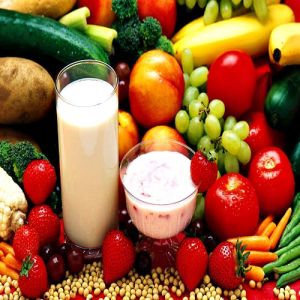In this part of the “Cracking Your Code” series, I talk about focusing on the physical or your bodily systems. I will separate this into two different posts; one on nutrition and the other on exercise.
Cracking the Code: Nutrition
Eating quality food is the most important thing you can do to maintain your health at its peak. In my medical practice I see patients who are unaware of the kinds of chemicals they consume during the course of a single day that could affect their health adversely. These potentially hazardous chemicals include preservatives and dyes to make food more colorful and flavorful.
The human body isn’t meant to digest and metabolize these artificial compounds. We just need proteins, carbohydrates and fats for our cellular structures to function. That’s it.
There are many diets out there. A popular one nowadays is the “Paleo diet” which is taken from foods eaten by humans during the Paleolithic era when refined grains (like bread) and dairy were not available. This Paleo diet basically consists of eating fresh vegetables, fruits, fish, meat and nuts.
There are also many other diets available like the Atkins. What these diets have in common regardless of their different names is that they advocate a low carbohydrate intake and stress that proteins should be the main fuel source.
My belief, coming back to the metaphor of the “code”, is that a “diet” is not the answer to eating well. I do not believe in calorie counting; the best way to gauge how many calories you need is to use your intuition.
I offer my patients simple guidelines to help them lose weight, feel stronger and mentally sharper. The first of these is to eat foods without ANY artificial ingredients. None whatsoever since the more natural and less laden with artificial ingredients the food, the easier it is for the body to digest and use it.
Though it may be difficult to find these natural foods in the popular supermarkets, if you go to stores like Whole Foods, you can find a wide selection. These organic foods are a little more expensive but consider their cost as an investment in your health. A website I like that expounds on this topic is www.naturopathic.org
My second guideline is to limit or even avoid (if you can) refined carbohydrates and sugars. These are found in breads, pastas, cookies and other foods made from white flour. These types of carbs have “a high glycemic index” which causes them to increase levels of circulating insulin in your body. There is a great article on Dr. Mercola’s (a prominent physician who teaches about nutrition) website: www.mercola.com
Insulin is a very interesting hormone (yes, it is a hormone) since it signals different metabolic processes in the body. We often think of it as controlling blood glucose (we use the term “sugar”) but it also has other functions. These include enabling the liver to convert thyroid hormones (an important factor in metabolism) into compounds that direct tissues to grow properly like the insulin-like growth factors.
When there is an elevated amount of blood sugar, insulin is secreted to help store the excess glucose as glycogen in the liver. When the stores of glycogen are full, excess carbohydrates are stored as fat. This is how obesity starts and why carbohydrate excess has contributed to the obesity epidemic.
The next post in this series will discuss the “power” of vegetables.


September 11, 2015 at 2:16 pm
Great post! I like your thinking!
LikeLiked by 1 person
September 11, 2015 at 3:51 pm
Thank you very much for kind comment. Appreciate it!
LikeLiked by 1 person
September 11, 2015 at 3:51 pm
Thank you very much for kind comment. Appreciate it
LikeLike